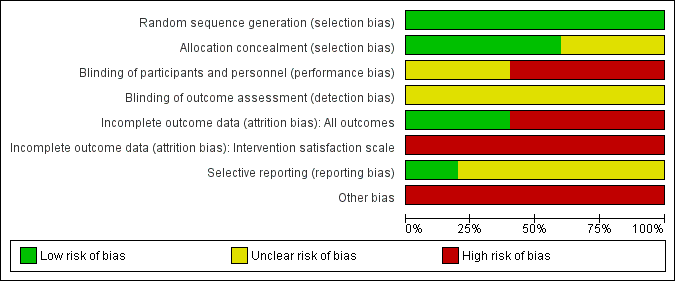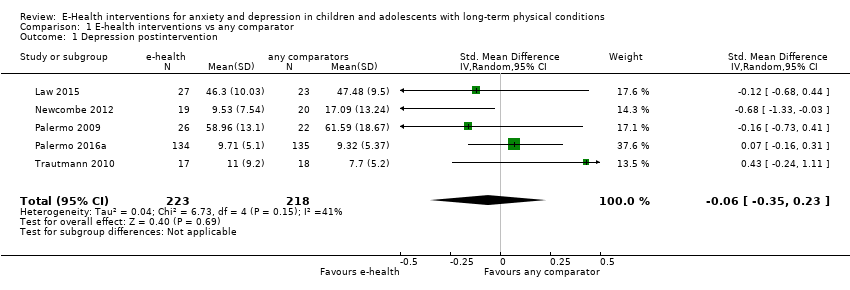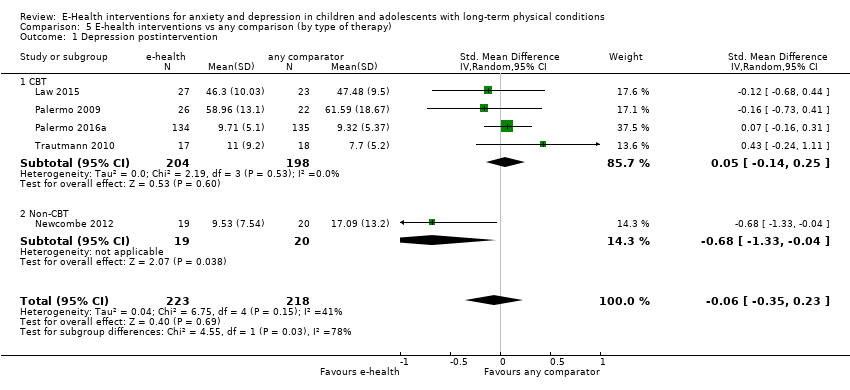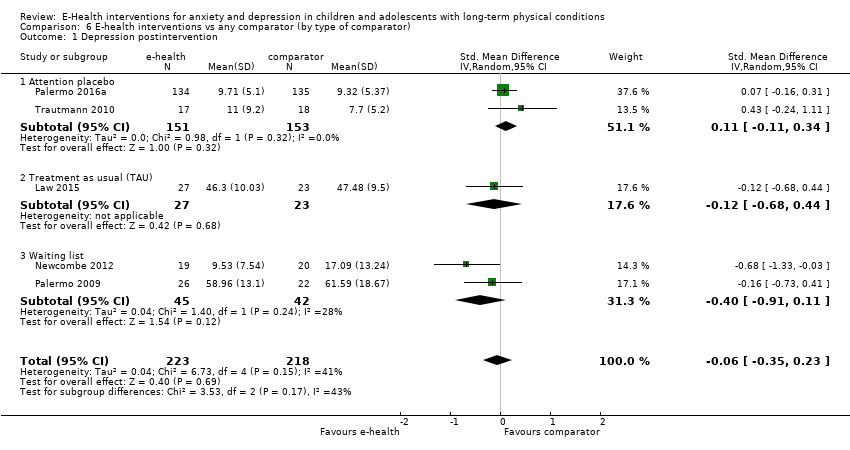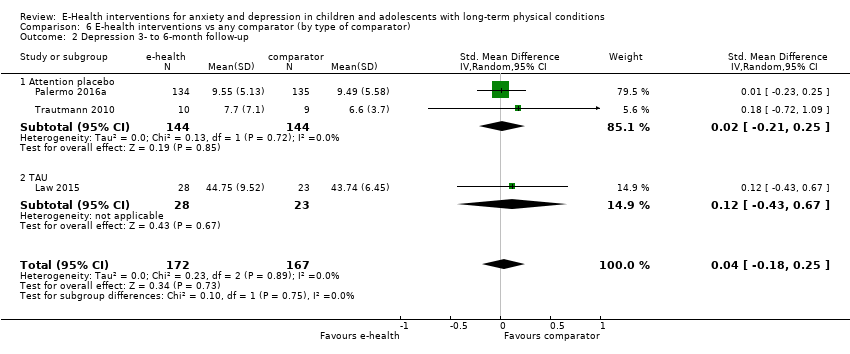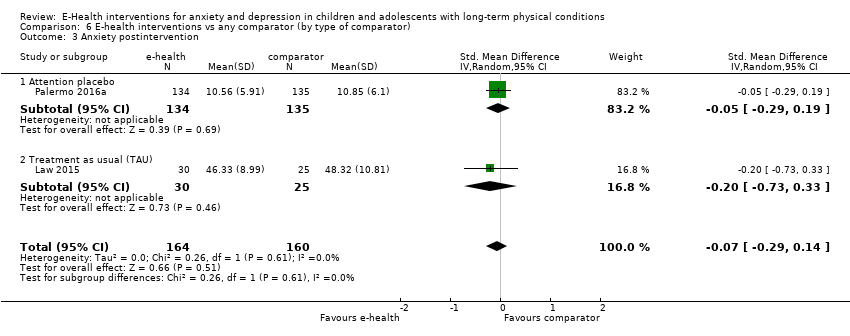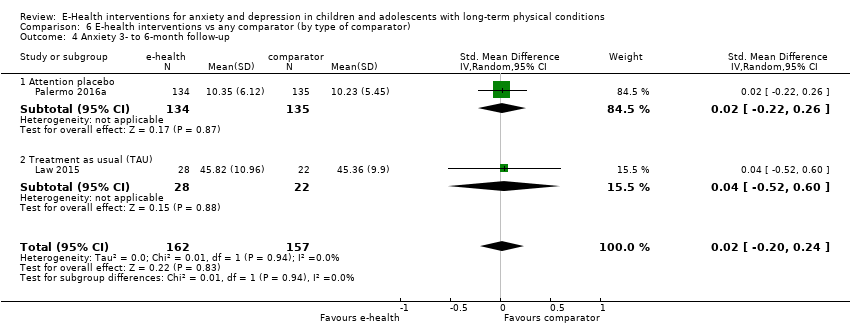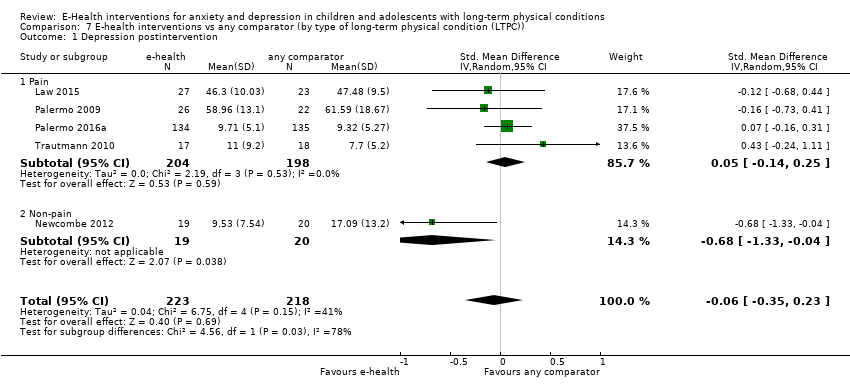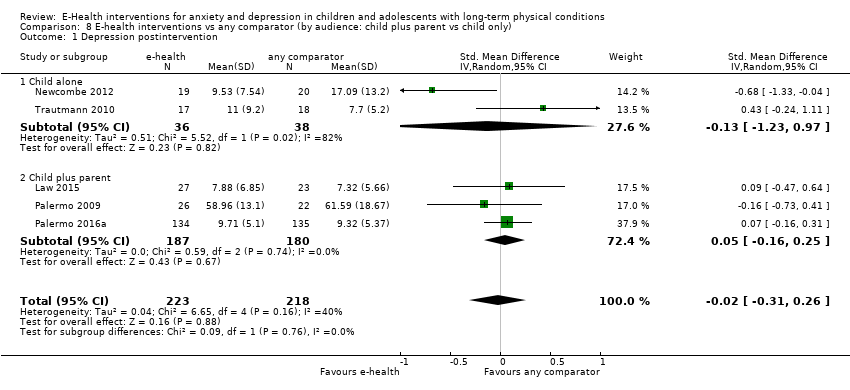Contenido relacionado
Revisiones y protocolos relacionados
Hiran Thabrew, Karolina Stasiak, Sarah E Hetrick, Liesje Donkin, Jessica H Huss, April Highlander, Stephen Wong, Sally N Merry | 22 diciembre 2018
Georgina R Cox, Patch Callahan, Rachel Churchill, Vivien Hunot, Sally N Merry, Alexandra G Parker, Sarah E Hetrick | 30 noviembre 2014
Hanna Kampling, Harald Baumeister, Jürgen Bengel, Oskar Mittag | 5 marzo 2021
Keith Hawton, Katrina G Witt, Tatiana L Taylor Salisbury, Ella Arensman, David Gunnell, Ellen Townsend, Kees van Heeringen, Philip Hazell | 21 diciembre 2015
Katrina G Witt, Sarah E Hetrick, Gowri Rajaram, Philip Hazell, Tatiana L Taylor Salisbury, Ellen Townsend, Keith Hawton | 7 marzo 2021
Zafar A Usmani, Kristin V Carson, Karen Heslop, Adrian J Esterman, Anthony De Soyza, Brian J Smith | 21 marzo 2017
Evan Mayo‐Wilson, Paul Montgomery | 9 septiembre 2013
Janine Joyce, G Peter Herbison | 3 abril 2015
Anthony C Jamesa, Georgina James, Felicity A Cowdrey, Angela Soler, Aislinn Choke | 18 febrero 2015
Zafar A Usmani, Kristin V Carson, Jien N Cheng, Adrian J Esterman, Brian J Smith | 9 noviembre 2011



